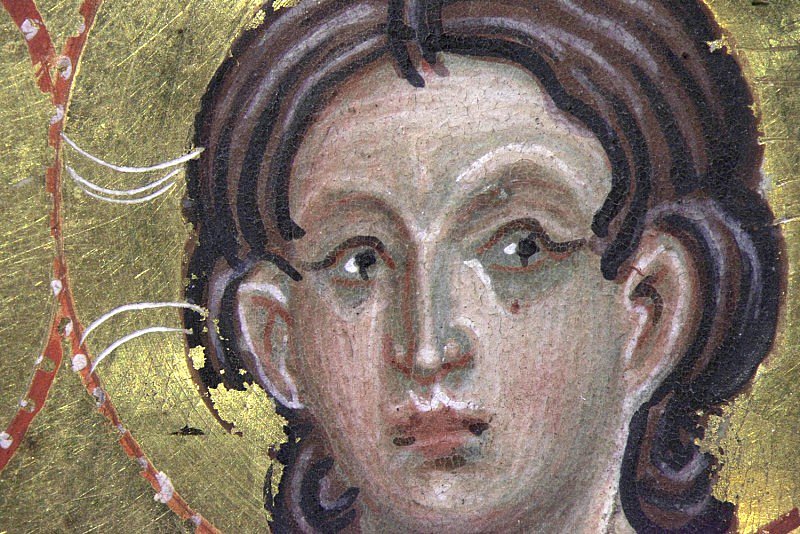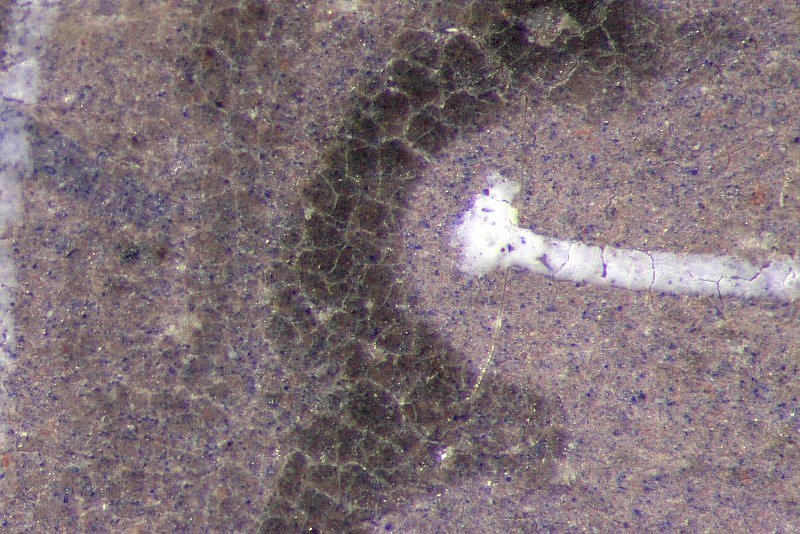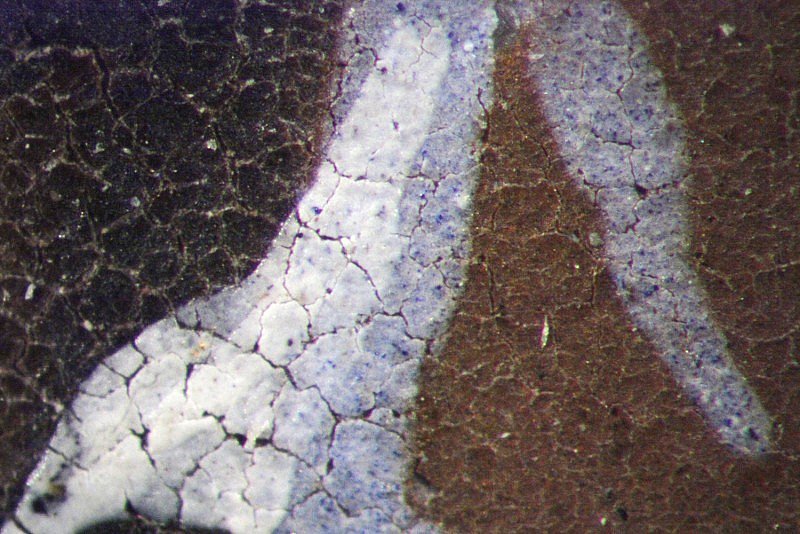Painting the flesh
Artists' Techniques
The materials and techniques used by each of the artists to paint flesh tones are amongst their most characteristic traits. Hands A, B, C and D all painted a blue base layer for flesh tones with woad, which is one of the most distinctive features of the decoration. The subsequent pink surfaces, red outlines and white highlights were applied as distinct layers. This is especially visible in the figures painted by Hand C, whose facial features are angular and exaggerated.
The Gaibana Master used earth pigments in flesh tones, which have a greenish rather than blue undertone. His Associate employed large amounts of azurite instead. The careful blending of paint layers by both artists results in much smoother modelling of faces compared to that found in faces painted by the other illuminators.



Historiated Beatus initial with God the Father above Christ, the Virgin and St John the Baptist (Psalm 1)
This, the most accomplished illumination in terms of style, technique, composition and iconography, was painted by the Master of Giovanni da Gaibana. The upper lobe of the initial B contains God the Father and two angels. The lobe below contains a Byzantine iconographic scheme known as the Deësis and showing the Virgin and St John the Baptist interceding with Christ for the salvation of humankind. The artist has used elements from both scenes to suggest a third one, Christ’s Baptism. The Baptist’s figure is aligned with the Father’s scroll above, inscribed with a quotation from St Matthew’s account of Christ’s Baptism, Hic est filius meus dilectus in quo… (‘This is my beloved son in whom…’). The intersection with the dove of the Holy Spirit unites the Father above and the Son below into a vertical image of the Trinity. The prophetic psalmody of King David (in the left letter shaft) harmonises the Old Testament poems and their New Testament fulfilment. In the curves on the right, Solomon praises God’s wisdom pictured beside and referred to in the opening words of Ecclesiasticus, omnis sapiencia a domino (‘all wisdom is from God’), penned on his scroll. Below, Isaiah predicts Christ’s virginal conception, his scroll inscribed with his prophecy, Ecce virgo [concipiet] (‘Behold, a virgin shall conceive’).
The image exemplifies the Gaibana Master’s salient features: compositions and protagonists resembling Byzantine icons; drapery with rhythmical folds, nestled patterns and thick impasto creating a relief effect; fabrics highlighted in white, geometrically shaped areas and shaded in darker, transparent glazes; flesh and facial features outlined in red, painted with earth pigments and built in gradation from a dark, green-grey undertone through carefully blended flesh colour to red shading and white highlights (hotspot 1). The violet colour in the initial, a mixture of vermilion and ultramarine blue, is unique in the manuscript (hotspot 2). The light grey hue on the border of St John the Baptist’s mantle was obtained by mixing a small amounts of ultramarine blue with lead white (hotspot 3).
